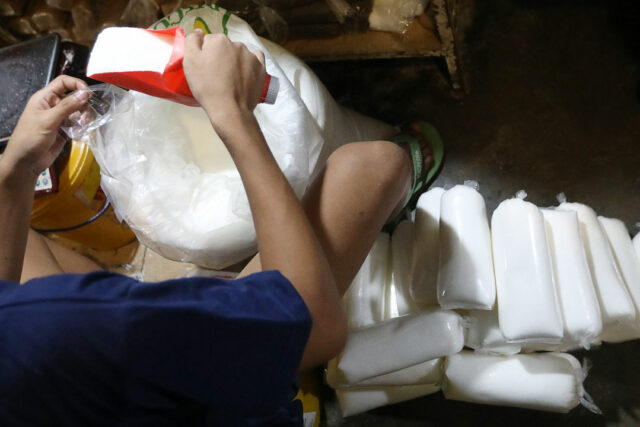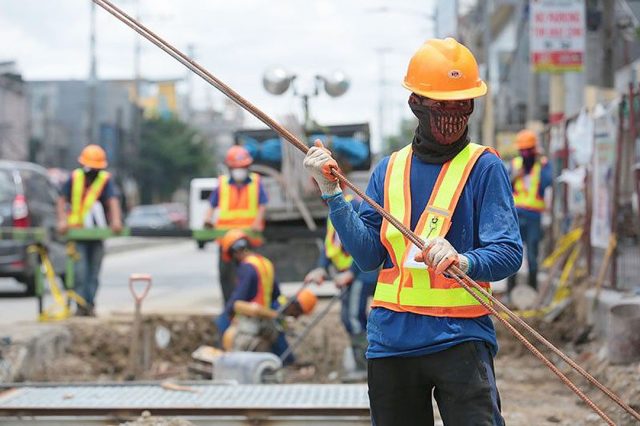By Patricia B. Mirasol, Reporter
TRIVOR U. LATAYAN, 29, has been working as a bank accounting associate at Bayer Business Services Philippines, Inc. in Manila since 2019.
He’s the company’s first deaf employee, and having that disability has taught him resilience.
“It was tough on my first day at work because my colleagues didn’t know much about deaf culture or how to communicate with me,” Mr. Latayan, who lost his hearing at the age of two after going into a coma, said in an e-mail. “But that didn’t discourage me.”
Things improved over time as he mustered the courage to “talk” to his hearing colleagues about the basics of sign language and how important clear communication is.
Companies that lead in disability inclusion drive more revenue and profit, according to a 2023 study of the US workforce by Accenture and Disability:IN.
 Accenture first documented the business case for hiring persons with disabilities (PWD) and offered guidance on how to advance inclusivity efforts in 2018, just before a global coronavirus pandemic.
Accenture first documented the business case for hiring persons with disabilities (PWD) and offered guidance on how to advance inclusivity efforts in 2018, just before a global coronavirus pandemic.
“In the past five years, the business case for hiring persons with disabilities has become even stronger,” Accenture said in the 2023 report.
Companies that have led on key disability inclusion criteria have realized 1.6 times more revenue, 2.6 times more net income and two times more economic profit than other participants in Disability:IN’s annual benchmark survey.
They were also 25% more likely to outperform on productivity compared with their industry peers that have not participated in the survey, measured as revenue per employee.
Diversity in the workplace, including hiring PWDs, leads to innovation and boosts employee engagement, Michael G. Panlaqui, human resources head at Bayer Philippines, said in an e-mailed reply to questions.
“Innovation is fueled by diverse people and diverse perspectives,” he said. “When you have a mission like ours at Bayer… that includes hiring PWDs who can contribute their views, talent and skills in pursuit of that mission. The talent and drive to excel can be found in anyone, even if they have a disability.”
Everyone brings “unique skills and strengths” to the table, Ambe C. Tierro, country managing director and technology lead at Accenture Philippines, told BusinessWorld.
“Hiring PWDs in our company promotes an inclusive culture, enhances engagement among our people and drives innovation,” she said in a separate e-mail. “That’s why we work in removing boundaries to foster an inclusive and productive environment.”
Hiring persons with disabilities is not an act of charity, contrary to popular belief, Grant Javier, executive director at nonprofit group Project Inclusion Network, said in a Zoom interview.
“Companies themselves greatly benefit from hiring PWDs,” he said. “It’s a good business decision to hire them.”
PWD-friendly companies have invested in technology to make life easier for people with disabilities.
Accenture opened its Philippine Accessibility Center, where PWDs can interact with accessible technology, in 2019. Among the tools found in the center are a smart cane that detects above-ground obstacles with ultrasound, automated wheelchairs and software that translates voice responses into typed text during video calls.
Bayer, meanwhile, had hallways and meeting room door widths adjusted in its Philippine office to accommodate wheelchair-bound employees. It also installed strobe lights to alert deaf employees in case of an emergency.
Team members of PWD co-workers likewise receive cultural sensitivity training, Mr. Panlaqui said.
“We even install the necessary supporting technology to help visually impaired colleagues do their work,” he said. Bayer’s town hall meetings and special events include deaf interpreters or live captions.
Having a deaf-driven business is easier than most people think, according to Francis Carl G. Reyes, chief executive officer and founder of Caravan Food Group Inc., which operates the Overdoughs and Elait food brands.
Customers can order through writing tablets available at all Overdoughs and Elait branches, he said in an interview. The menus are designed so patrons can easily point out the items they want.
The company also developed buzzers connected to watches, so “with just a touch of a button, the staff are alerted, and they know which table needs them,” Mr. Reyes said.
STILL POOR
There were 1.5 million registered PWDs in the Philippines as of April 12, according to the National Council on Disability Affairs website.
“Most are living in poverty,” Billy Jay N. Pedron, a professor at the De La Salle Medical and Health Sciences Institute, said in the January 2024 issue of World Education Connect e-publication.
Decades after the enactment of the Magna Carta for Disabled Persons in the 1990s, PWDs still face challenges, particularly in getting decent jobs, he said.
People with disabilities face the major problem of job mismatch between their skills and the available jobs in the market, Mr. Pedron said.
The law also does not force private companies to hire PWDs. “Instead, the law only encourages private institutions to hire and employ PWDs with an incentive,” he said in the study.
Only 57% of PWDs in the Philippines were employed in 2020, as opposed to the 93.4% national employment rate at that time, according to the Technical Education and Skills Development Authority. The top two misconceptions about PWD employees are “they either can’t handle it, or they can only handle this much,” Mr. Javier said. “A third one is that it’s costly to hire them.”
Employers can also have “attitudinal barriers.” “Oftentimes, people think that the barriers only exist in a physical sense, but the greater issue is with the mindset of people who hire.”
Philippine laws “encourage” private companies with more than 100 employees to reserve at least 1% of all positions for people with disabilities.
Bayer, which has three units in the Philippines — Bayer Philippines, Inc.; Bayer Crop Science Philippines, Inc.; and Bayer Business Services Philippines — said its 35 PWD employees account for almost 2% of its headcount. Accenture counts 4% of its Philippine staff as PWDs.
People should not put PWDs in a box, Mr. Javier said, citing the stereotypes of blind people working as massage therapists, or persons with autism who are overlooked in customer-facing roles.
Project Inclusion Network has placed blind people in information technology as programmers. “That was unthinkable before, but with the openness of companies and the technology available nowadays, this is highly possible.”
Some Filipinos with autism have found their way into HR. Hiring PWDs need not be costly either, Mr. Javier told BusinessWorld.
“We can come up with strategies that don’t require sign language interpreters. You can text to talk to each other, for example,” he said. “That alone is very cost-effective.”
Tax incentives are another corporate benefit for Philippine companies that hire people with disabilities, though most find the requirements too much of a hassle.
Under the law, private companies that employ qualified PWDs are entitled to an additional deduction from their gross income equivalent to 25% of salaries paid to PWDs.
“The Labor department and Bureau of Internal Revenue are not aligned,” Mr. Javier said. “There are so many procedures required by both agencies.”
Mr. Reyes, whose company’s deaf employees make up more than half of its staff, said they’ve tried several times to avail themselves of the tax incentives, to no avail.
“Every time we try to reach out [to a government agency], they always seem to be on vacation,” he said. “Now, we’re paying everything like a normal company.”
But for Caravan Food Group, it’s not about the incentives. “It’s helping us send a message that even without incentives, we are operating successfully. You can make a successful business without any of these benefits.”
Mr. Javier said policy makers seem to be aware of the needs of people with disabilities and lawmakers particularly have been trying to improve their lot.
In March 2022, a measure that ensures inclusive education for students with disabilities was enacted, even though it’s “not perfectly implemented,” he said. Both Houses of Congress have also recently held hearings on the PWD ID and its benefits.
Bayer Philippines plans to hire more people with disabilities, Mr. Panlaqui said. He added that Bayer employees know too well that an inclusive workplace is about people looking out for each other.
“Whenever we have a company-wide hybrid event and the deaf interpreter is not immediately on screen, many of our people will actively chat in the message section looking for them because they know their colleagues need them,” he said.
Mr. Reyes wants to give his staff career opportunities beyond manning a café.
“I want to give them more leadership training,” the PWD champion said. We already have deaf supervisors and deaf managers. It’s already starting.”
Mr. Latayan, the deaf accounting associate at Bayer, enjoys the opportunity to learn and grow in his job. “It feels great to be in a place where I can thrive and contribute, regardless of any challenges I may face.”
 As we progress in age, it becomes increasingly crucial to maintain adequate muscle mass in order to continue enjoying our physical activity as it will help prevent us from sustaining injuries. It is a widely held misconception that lifting weights will cause women to “bulk” up. “Bulking” up requires years of effort and a variety of lifestyle modifications, and women are genetically different from men in that they can create massive muscles with enough dedication.
As we progress in age, it becomes increasingly crucial to maintain adequate muscle mass in order to continue enjoying our physical activity as it will help prevent us from sustaining injuries. It is a widely held misconception that lifting weights will cause women to “bulk” up. “Bulking” up requires years of effort and a variety of lifestyle modifications, and women are genetically different from men in that they can create massive muscles with enough dedication. Strength training has been shown to be highly effective in enhancing body composition. Unlike cardio, strength training causes the body to continue burning calories even you are at rest. The objective is to gain lean muscle mass, as this is associated with an increased resting metabolic rate, representing the overall caloric expenditure during periods of rest. And the best way to grow lean muscles is to engage in regular strength training and backed by proper diet.
Strength training has been shown to be highly effective in enhancing body composition. Unlike cardio, strength training causes the body to continue burning calories even you are at rest. The objective is to gain lean muscle mass, as this is associated with an increased resting metabolic rate, representing the overall caloric expenditure during periods of rest. And the best way to grow lean muscles is to engage in regular strength training and backed by proper diet. Any form of exercise can elevate your mood. Whenever strength training releases feel-good chemicals, your mood will be positive. Being disciplined in your strength training can produce positive physical benefits that will increase your self-esteem and confidence. Wearing the clothes you’ve wanted to wear and no longer feeling physically weak will help you with the mental health stability you deserve.
Any form of exercise can elevate your mood. Whenever strength training releases feel-good chemicals, your mood will be positive. Being disciplined in your strength training can produce positive physical benefits that will increase your self-esteem and confidence. Wearing the clothes you’ve wanted to wear and no longer feeling physically weak will help you with the mental health stability you deserve.





 Accenture first documented the business case for hiring persons with disabilities (PWD) and offered guidance on how to advance inclusivity e
Accenture first documented the business case for hiring persons with disabilities (PWD) and offered guidance on how to advance inclusivity e










